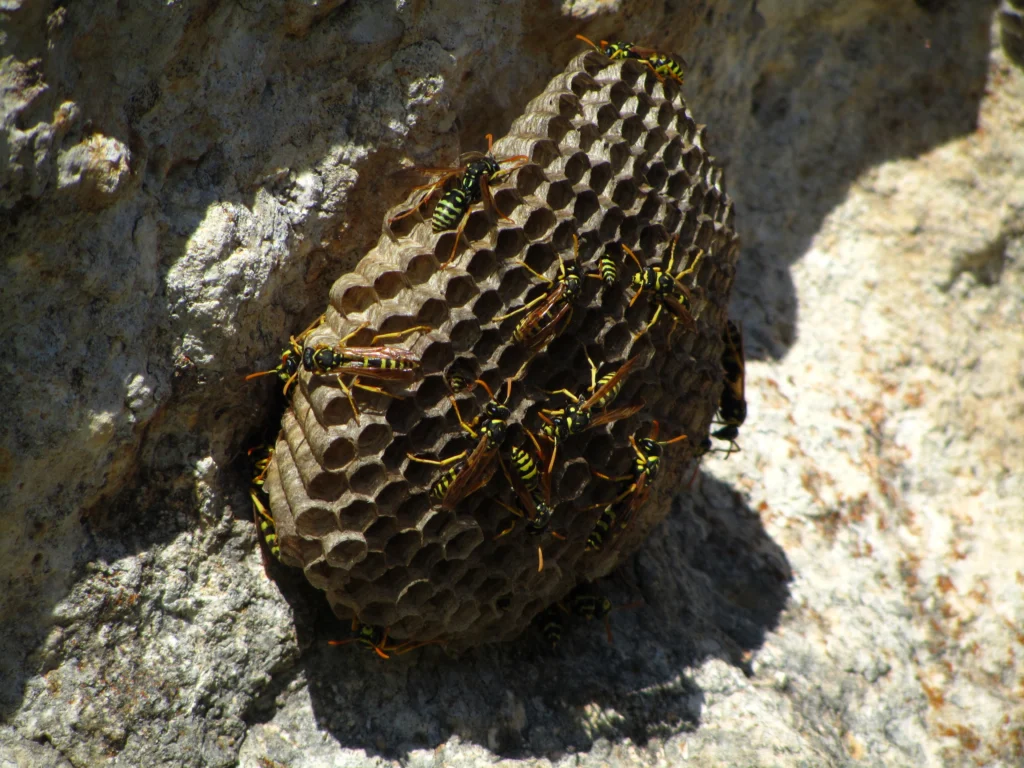Contents Guide
Biological pest control is becoming a preferred alternative to chemical pesticides, especially in sustainable agriculture. This method relies on living organisms such as beneficial insects, natural predators, and biocontrol agents to regulate pest populations.
According to a USDA study, farms using integrated pest management (IPM) with biological controls have seen a 30% reduction in pesticide use, improving environmental health. Unlike chemical pesticides, which can harm beneficial insects and contaminate soil and water, biological control supports ecological balance.
Additionally, crops grown with fewer pesticides often meet organic standards, attracting health-conscious consumers. However, this method requires specialized knowledge and may take longer to show results. While biological control is effective, success depends on environmental conditions and proper implementation. Despite its challenges, it remains a vital tool in sustainable pest management, offering both benefits and drawbacks.
What is Biological Pest Control?
Biological pest control is a natural and environmentally friendly method of managing pest populations using living organisms such as beneficial insects, predators, parasitoids, and pathogens.
Instead of relying on chemical pesticides, this approach enhances or introduces natural enemies that keep pests under control. It plays a crucial role in Integrated Pest Management (IPM) and promotes sustainable agriculture by reducing pesticide use, protecting biodiversity, and minimizing environmental impact.
Examples of Biological Pest Control
- Ladybugs feeding on aphids play a vital role in pest control for gardens, helping to protect crops naturally.
- Parasitic wasps lay eggs inside harmful caterpillars, reducing their population.
- Bacillus thuringiensis (Bt) bacteria producing toxins that kill insect larvae.
This method supports ecological balance, prevents pesticide resistance, and ensures long-term pest control while keeping crops and the environment safe.

Advantages of Biological Pest Control
1. Environmental Benefits
- Reduces reliance on chemical pest control, minimizing pollution of soil, water, and air.
- Supports biodiversity by maintaining natural ecosystems.
- Lessens the environmental, legal, and public safety concerns associated with toxic chemicals.
2. Healthier Food Production
- Reduces pesticide residues in crops, making food safer for consumption.
- Minimizes health risks for farmers, field workers, and consumers.
- Organic farming benefits from biological control methods as they align with natural food production.
3. Economic Benefits
- Cost-effective over time, as biocontrol agents can establish self-sustaining populations.
- Reduces expenses associated with repeated pesticide applications.
- Provides long-term crop protection with fewer recurring costs.
4. Increased Specificity
- Targets specific pests, reducing harm to non-target organisms.
- Helps in ecological pest control by maintaining a balanced food web.
- Supports customized pest control systems for different crops.
5. Slows Down Pest Resistance
- Unlike chemical pesticides, which pests quickly develop resistance to, biological methods use multiple modes of action.
- Helps delay or prevent pest resistance in the long run.
6. Safety Considerations
- Most biological control agents are non-toxic and safe for humans and wildlife.
- Avoids the toxicity risks linked to chemical pesticide exposure.
- Contributes to environmental sustainability by preserving beneficial species.
Disadvantages of Biological Pest Control
1. Slower Response Time
- Unlike chemical pesticides, which work immediately, biological pest control vs pesticides highlights that biological control can take weeks or months to show results.
- Pest populations may temporarily increase before natural enemies control them.
2. Dependence on Environmental Conditions
- The effectiveness of biological control methods varies with temperature, humidity, and other environmental factors.
- Natural enemies may migrate or fail to establish in certain areas.
3. Potential for Pest Resistance
- Some pests may develop resistance to natural predators, similar to how they resist pesticides.
- Requires continuous monitoring and adjustment of biological pest control methods.
4. High Initial Costs
- Establishing a biological control system can be costly due to research, testing, and application expenses.
- Farmers may need to purchase and release biocontrol agents multiple times before achieving stability.
5. Requires Specialized Knowledge
- Success depends on understanding both the pest and its natural enemies.
- Farmers need training to properly implement biological pest control methods.
6. Potential Harm to Non-Target Organisms
- Introduced predators may harm beneficial insects, disrupting the ecological balance.
- Some biological agents can become invasive species if not carefully managed.
7. Incomplete Pest Eradication
- Unlike chemical pesticides, which aim to eliminate pests completely, biological control maintains them at manageable levels.
- Some crop damage may still occur due to surviving pests.
When Biological Control Is Appropriate?
- Best suited for organic farming and environmentally conscious agricultural systems, organic pest control helps maintain a balanced ecosystem.
- Works well for crops with low tolerance for chemical residues.
- Ideal for farmers aiming for long-term sustainable pest management.
- Effective in greenhouse environments, where conditions can be controlled for optimal results.
- Recommended for regions with strict pesticide regulations, reducing reliance on chemical solutions.
Conclusion
Biological pest control is a valuable tool for sustainable agriculture, offering benefits like reduced pesticide use, healthier crops, and long-term cost-effectiveness. However, its limitations, including slower response times and the need for specialized knowledge, must be considered. Farmers should assess their specific needs and use integrated pest management (IPM) strategies to achieve the best results.
FAQs
Biological control is eco-friendly, cost-effective in the long run, and helps maintain biodiversity while reducing chemical pesticide use.
The main drawbacks include high initial costs, slow response times, and the need for technical knowledge to implement effectively.
No, it focuses on maintaining pest populations at manageable levels rather than total eradication.
Examples include introducing beneficial insects like ladybugs, using fungal pathogens, and deploying natural predators such as nematodes.
Yes, but it requires careful planning, environmental considerations, and often works best as part of an integrated pest management (IPM) approach.



 Pest Control Solutions
Pest Control Solutions